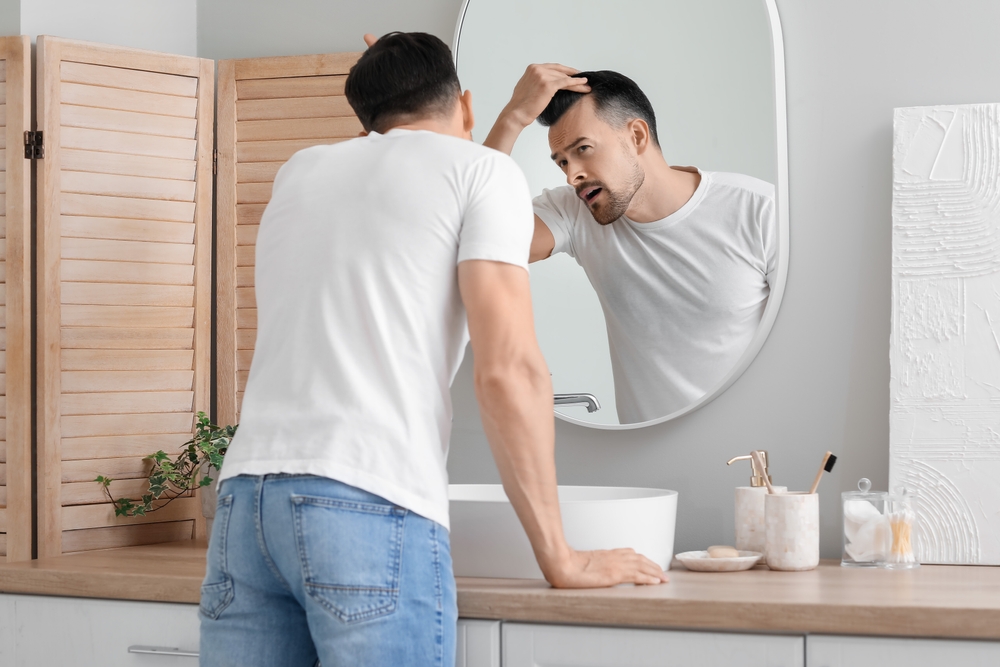Great hair gives you confidence, impacts your mood, and affects how you interact with the world around you. That’s why thinning hair can be incredibly stressful and frustrating.
While losing up to 100 strands of hair daily is considered normal, losing more hair every day can be a sign of hair thinning. Fortunately, you can regain your luscious mane and self-esteem.
Keep reading to find out why you can stop worrying about thinning hair with treatment for fuller and more lush locks!
What Causes Hair Thinning?

Hair thinning is the gradual loss of hair. It happens when the rate of hair loss is greater than that of hair growth. Sometimes, thinning hair can eventually lead to baldness.
While thinning hair is more prevalent in men, it can affect anyone, regardless of gender or age. There are many reasons why your hair can start to thin, such as:
- Aging
- Thyroid issues
- Too much stress
- Hormonal changes, including birth control use, pregnancy, childbirth, and menopause
- Androgenetic alopecia or male or female pattern baldness, usually as a result of genetics
- Autoimmune conditions like alopecia areata, which occur when your immune system attacks its hair follicles, causing hair loss
The good news is that you can significantly prevent additional loss and promote new hair growth with PRP therapy.
What Is PRP Therapy?
Platelet-rich plasma, or PRP therapy, is an innovative treatment for hair loss that utilizes the body’s healing properties to promote hair growth and stave off hair loss. Blood mainly comprises two components: plasma, the liquid part of the blood, and red blood cells.
Plasma contains platelets. Platelets help your body create clots to stop bleeding. Additionally, they have a high concentration of growth factors that promote cell growth and tissue repair.
Growth factors in PRP therapy can encourage hair follicles to regrow hair if your hair is thinning.
What Happens During PRP Therapy?

PRP therapy takes 45 to 60 minutes to complete at Calkin & Boudreaux and includes the following steps:
Step 1
Your provider at Calkin & Boudreaux will draw a small amount of blood, usually from your arm. The amount varies between 10 to 60 milliliters.
Step 2
After the blood is removed, it is put in a centrifuge. The centrifuge spins it rapidly, separating platelets from other blood cells.
Step 3
After approximately 10 minutes in the centrifuge, the blood will have separated into:
- Red blood cells
- Platelet-rich plasma
- Platelet-poor plasma
Platelet-rich plasma is then put in a syringe. Then, your dermatologist injects the PRP treatment into multiple locations on the scalp that require hair growth. “PRP therapy harnesses the body’s own healing factors to stimulate hair follicles, offering a natural and effective solution for many patients experiencing hair thinning or loss,” says Dr. Ashley Clark from our Mountain View and Los Gatos locations.
How Does PRP for Hair Loss Work?
PRP therapy is helpful in combatting hair thinning and preventing hair loss. Once injected, growth factors in PRP activate the papilla cells, which trigger new hair growth.
Papilla cells are found at the bottom of hair follicles. They play an essential role in hair formation and growth.
The growth factors also boost circulation at the injection sites, thickening hair follicles. Consequently, new hair growth in the treatment area is thicker and healthier.
Additionally, growth factors heal and reactivate inactive hair follicles, which helps increase hair count in the area. PRP injections enhance hair growth, increase the thickness of your hair follicles, and decrease hair shedding.
What Is Recovery Like after PRP Injections?
Most people can resume normal activities after the treatment. The injection sites may be slightly tender and sore, but this should resolve after a few days.
You can expect considerable hair restoration results within 3 to 12 months of undergoing PRP injections.
How Can You Enhance Your PRP Therapy Results?
Following PRP therapy, your dermatologist at Calkin & Boudreaux will provide detailed instructions. Following these instructions is critical to your recovery and can ensure optimal results. Some of the guidelines may include:
- Don’t smoke or drink for 24 hours
- Avoid touching your scalp or hair for as long as possible
- Don’t expose your head to direct sunlight for at least 24 hours
- Steer clear of strenuous activities, including working out, for 24 hours
- Don’t shampoo, condition, or treat your hair with any product for 12 hours
How Many PRP Sessions Are Required?

PRP requires more than one treatment, with most patients needing several sessions to attain significant hair regrowth. The number of PRP sessions varies from person to person based on the condition of your hair and how you respond to the treatment.
However, your dermatologist may suggest 3 to 4 sessions, each spaced 4 to 6 weeks apart, to achieve your desired outcome. If you want to achieve the best possible results, do not skip any recommended sessions, as consistency is the key.
The effects of PRP treatment can last up to 18 months after the first round of injections. Most patients require annual touch-ups to maintain the effects of PRP therapy.
At your follow-up appointment, your Calkin & Boudreaux dermatologist will schedule routine maintenance treatments for full and robust hair growth. PRP can be used as a standalone treatment or combined with other therapies.
Treat Hair Thinning with PRP
You don’t have to be anxious about thinning hair. You can regrow your thinning hair with PRP therapy at Calkin & Boudreaux. Our skilled and experienced dermatologists can determine the best injection sites to maximize hair growth. “PRP therapy offers a promising solution for many of our patients struggling with hair thinning. By utilizing the body’s own growth factors, we can often achieve significant improvements in hair density and thickness,” explains Dr. Clark.
Are you struggling with thinning hair? Book an appointment at Calkin & Boudreaux to get on the path to fuller, healthier hair. Isn’t it time to love what you see in the mirror again?